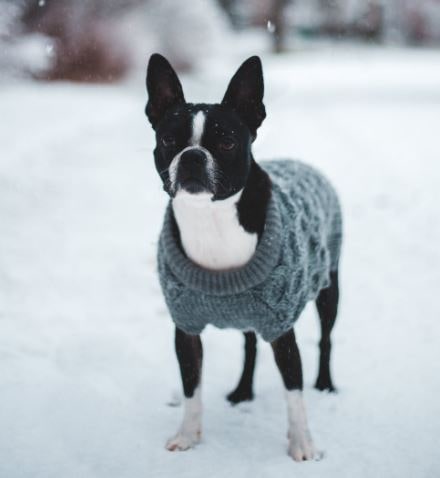Now that the Fourth of July is approaching and you are making all of your holiday plans, it is a good time to think about how the fireworks and all of those summer storms affect your pet's health.
There are many ways that you can ease their anxieties of this time of year and will make a huge difference in the quality of life for your pet and family.
There are many ways that you can ease their anxieties of this time of year and will make a huge difference in the quality of life for your pet and family.
Understanding if your pet has ongoing anxiety or is just having a fear response will help you find the right solution.
Whether it is storms or fireworks or any sort of new situation in the home, such as moving or guests, there are plenty of ways to help your pet be more comfortable.
Is This Bad Behavior or is it a Fear Response to Storms?
A knock at the door is often all it takes to cause a dog to bark.
This type of fear response is normal as the dog is attempting to not only warn the intruder, but also to alert its people.
However, sometimes sudden noises, such as those produced during a thunderstorm, will cause an animal to respond abnormally.
When this happens, you need to know that there are steps to take that will ease your pet’s fears and reduce inappropriate behaviors.
Steps to Take to Reduce a Dog’s Fear of Storms
Anxiety
Anxiety can cause fear.
When an animal responds to anxiety in an immediate and excessively phobic manner, the resulting behaviors may be uncontrollable and damaging to not only the animal, but also to the surroundings.
It is important to understand understand that their animal is not behaving badly, but is reacting out of fear.
Storm Phobia
Dogs with storm phobias may be observed exhibiting abnormal behaviors when exposed to:
- Thunder
- Lightning
- Darkness
- Wind
- Ozone changes
- Barometric changes
Negative behaviors may be witnessed through:
Vocalization, including:
- Intense barking
- Shrieking
- Whining
- Howling
- Pacing
- Drooling
- Trembling
- Hiding
- Freezing, refusing to move
- Refusal to follow commands
- Running away
- Hiding in small, enclosed spaces
- Chewing
- Scratching
- Ripping out water lines behind toilet
- Destruction to vents, hoses, cords, and/or ductwork behind washer and dryer
- Breaking out through window or door screens
- Clawing on doors or walls
- Breaking through kennel, fencing, or crate
Injuries that occur as they attempt to escape, such as:
- Cuts on body
- Bloody pads
- Ripped or broken toenails
- Broken teeth
- Electrical shock
- Aggression
Appropriate Methods to Handle an Animal’s Storm Phobia
When observing your animal in this fearful state, one of the first reactions you might have may be to try to soothe them, but they need to know that this method will not benefit the situation.
When comforting words are uttered and the animal is pulled in for holding and petting, the soothing response sends the message to the dog that fearful behavior earns a reward, which encourages the animal to continue their behavior.
Punishing the animal won’t work either.
When in a storm phobic state of mind, the animal is in a panic and not behaving out of disobedience.
Punishment will only make the dog more afraid when the next storm hits.
The best steps you can take to help your pet maintain control during a storm include:
- Play a favorite game
- Initiate a training session that involves treats
- Initiate a training session that involves treats
Acting unconcerned, ignoring the storm.
Providing a calm environment
- For dogs that find comfort in their crate, drape the outside with a blanket
- Responding patiently, provide animal with a feeling of security without reward
- Responding patiently, provide animal with a feeling of security without reward
Instead of petting, apply continuous pressure to their body through:
- An arm around the dog
- Leaning on or against the dog.
Many people wrap their dogs with blankets or use a Thundershirt to make them feel safer.
If you have an outside pet you may want to come up with an alternate environment if their animal has storm phobia.
A metal roof makes the noise louder, and being in the kennel may make the animal feel as if the storm is fully surrounding them.
A panicked animal in an outside kennel will often try to break or bite through the wire, injuring themselves as they try to escape.
Treatment Options
When a pet begins to show behaviors related to storm phobia it is important that they receive help.
It is important to know that while these behaviors will not go away, there are treatment plans that your veterinarian can initiate that will help to make their pet less fearful, making it safer for the animal and for the family as well.
The types of options include:
Counterconditioning
Desensitization
Anti-anxiety remedies, such as:
Wraps
Capes
Capes
Eye shades
Ear protection
Ear protection
Pheromones
Prescriptions
Prescriptions
When you recognize that your pet has storm phobia you can help them to respond in a less fearful and more appropriate way.
We carry a number of natural stress remedies, toys, and RX medications to help you and your family make a more comfortable environment for your pet.






